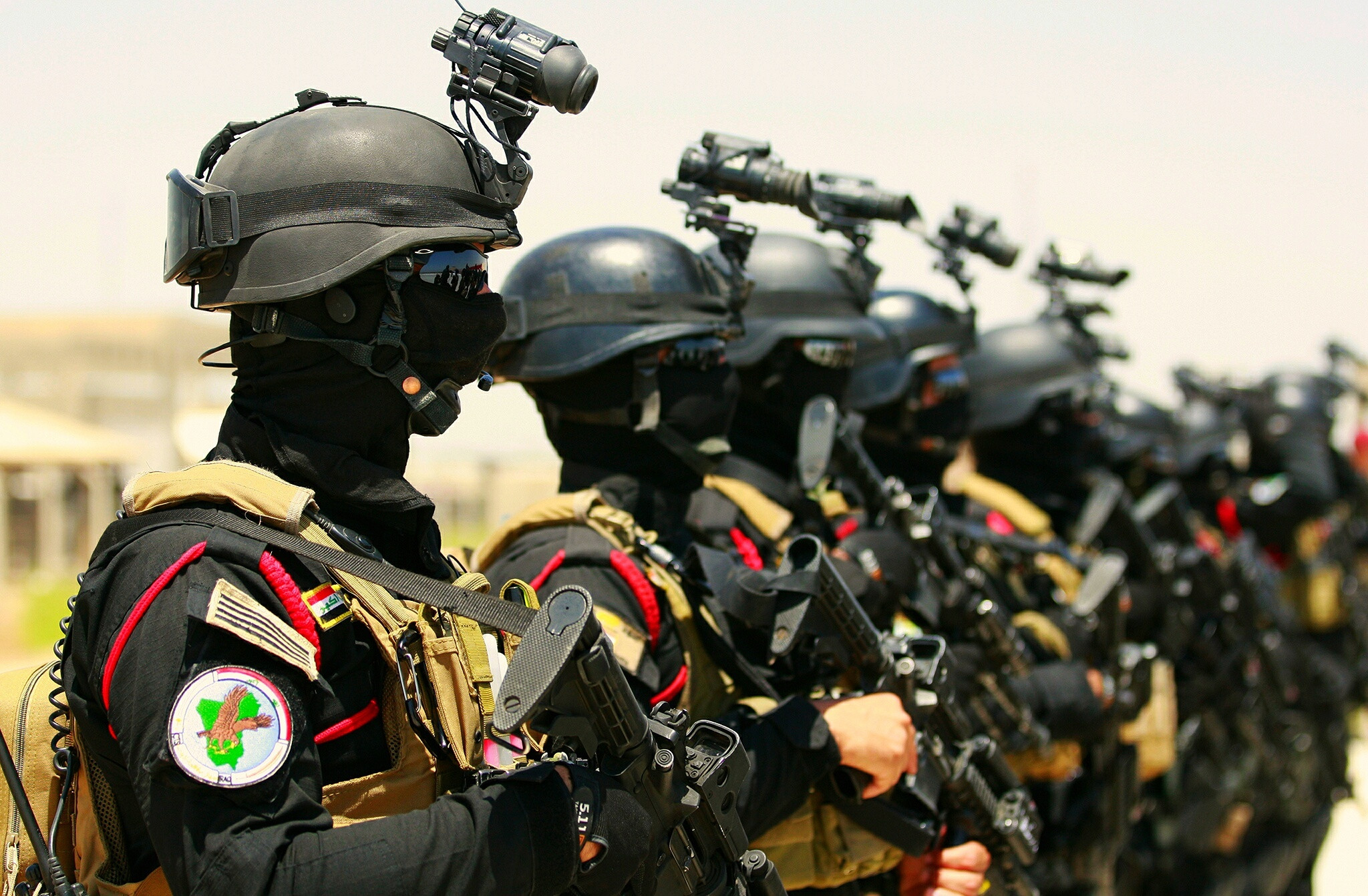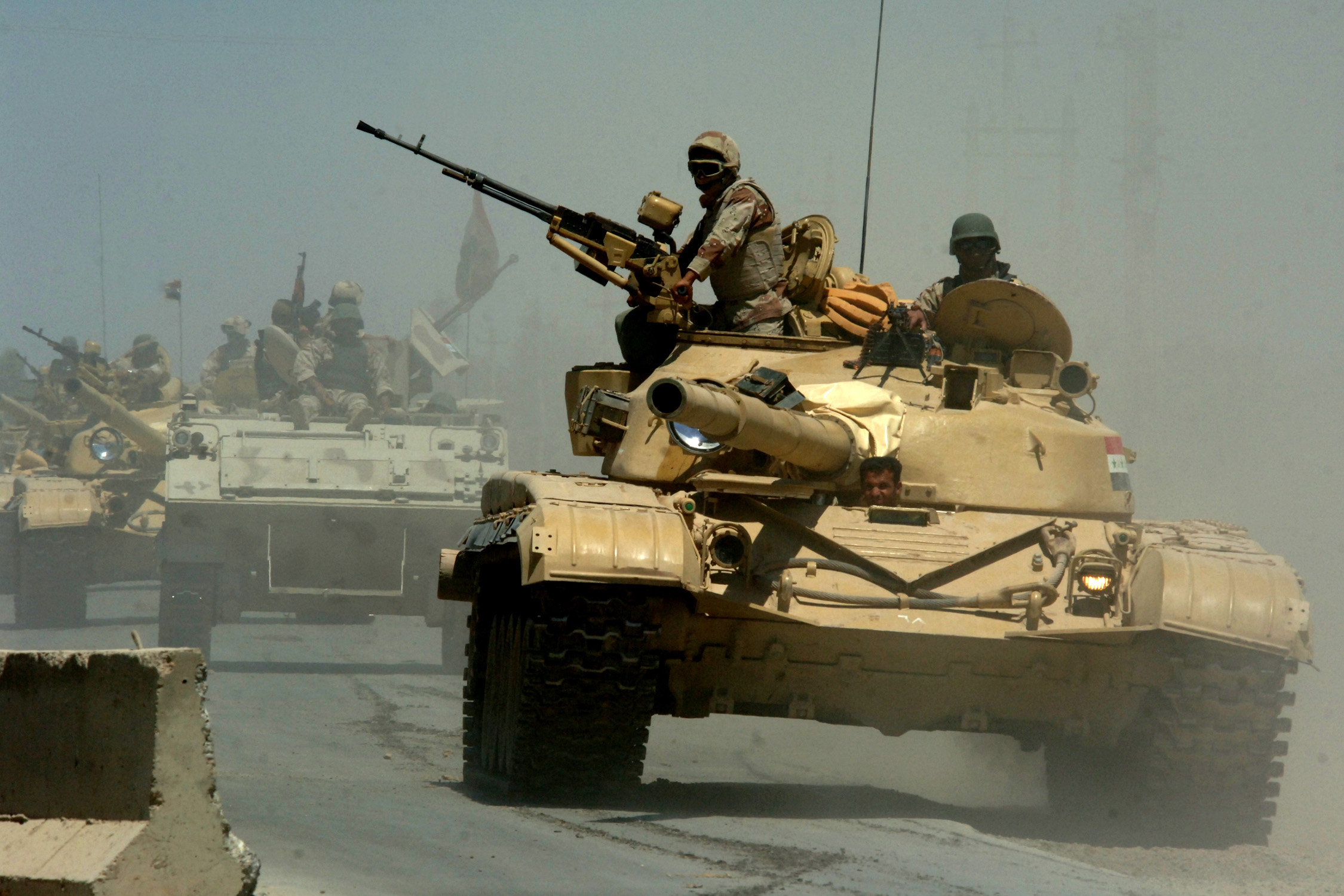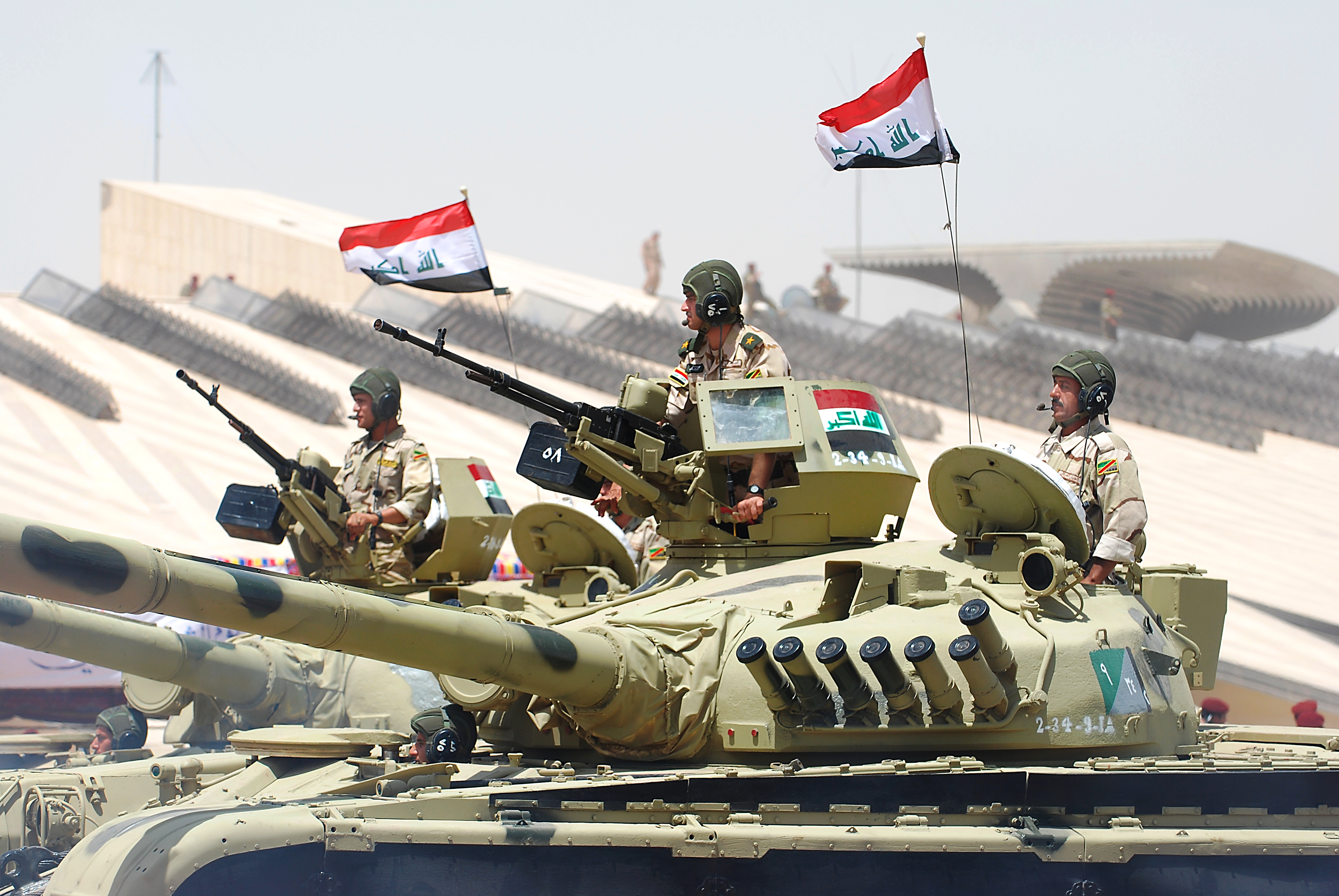
Iraqi Special Forces
Written by Igor Pejic exclusively for SouthFront; Edited by Yoana
MA Igor Pejic, graduated Political Science Foreign Affairs Department at the Faculty of Political Science and now he is MA in Terrorism, Security and Organized Crime at the University of Belgrade, Serbia.
The Iraqi Armed forces have been formed back in 1920 with rich history of conflicts throughout the 20th century. Among the most notable engagements were 1948 Israeli-Arab War, 1967 Six day War, Yom Kippur War 1973, Wars with the Kurds in 1960-1970 and 1974-1975, Iraq-Iran war in the 1980s, the Persian Gulf War in 1991 and finally, the Iraq War in 2003 which resulted in the ending of Saddam Hussein’s reign over the country and marked a new beginning for the security forces as well. After the fall of Saddam Hussein, the US along with the Department of Defense played a pivotal role in reshaping Iraqi’s military. The US chose to disestablish the Iraqi Army and over the next couple of years poured extensive amounts of money in order to equip, and train the new security forces of Iraq. The Department of Defense as well as the Department of State were mentoring the work of Iraq Security Forces even during the drawdown of the US forces from Iraq. Even though, there has been a significant drawdown of the US forces in Iraq, the vital interests of the US government still remain strong in that region and will probably lead to future reassignments of the US forces as it is seen even today. When discussing the new Iraqi Security Force we must keep in mind that this country is influenced by the US and Iran, and this influence spreads also on all Iraqi security factors including military, paramilitary and police forces. After the toppling in 2003 Americans tried hard to pressure and subvert Iraq’s political and security spectrum into their hands, though this effort was obvious as were the results; the Iranian government also played their cards well. The Iranian efforts to subvert the US influence, especially in the security sector, was a success. The military as well as the police forces have built a strong leadership, which is heavily composed out of Shia officers. This security cadre maintains a strong bond to other Shia politicians in the country and also in Iran.

(May 18, 2006) Mushahda, Iraq.Iraqi tanks from the Iraqi Army 9th Mechanized Division pass through a highway checkpoint on their way to Forward Operating Base Camp Taji, Iraq..U.S. Navy photo by Photographer’s Mate 1st Class Michael Larson.
Though the heavy investment of the US in the period of 2003 to 2011 was estimated to be around 26 billion dollars, invested in the Iraqi Security Force, the ISF didn’t deliver the results which were expected. With the rise of the Islamic State in 2014 the ISF proved to be rather incompetent to deal with that threat which shouldn’t have represented a problem that almost collapsed the whole society. Two major misconceptions, surrounding ISF incompetence are: the security forces of Iraq that were largely intact before ISIS took Mosul, and the Iraqi Security Forces that have been entirely destroyed in the weeks after that event. The deterioration of ISF began almost immediately after the US funding ended in 2009, meaning that preparation for this catastrophic event that allowed the Islamic State to prosper in Iraq was planned more than a decade ago. One of the main problems of the Iraqi Army in the past decade was the chronic polarization of the security forces and politicized command reappointments. The examples of redeployment of the ISF forces are the divisions of the southern-based Iraqi Army into Anbar and Ninawa provinces to offset the weaknesses of the individual military units. This was followed by the collapse in Kirkuk and in Northern Salah al-Din, where the uprising caused by the Sunni insurgent followed the killing of over fifty protestors by the security forces. This bloody fallout in 2013 made the sectarian divides in the country a bit deeper. In 2013, the Shia militias increased their role in the domestic security which was threaten by the scourge of the Islamic State. Shia militias were backed by Iran and drawn from Syria and this trend radically accelerated after the fall of Fallujah in the late December of 2013. This was the moment when we could see the power shift in Iraq where the US lost allot of its influence on the domestic policy and security of the country and another regional power (Iran) took the advantage of that power vacuum caused by the Islamic State. After the fall of Mosul in 2014, and the panic which ensued, sacked the Iraqi Security Forces of more than a quarter of its units. Despite this grievous loss the core of ISF still remained strong with thirty-six Iraqi Army brigades and twenty-four Federal Police brigades. The brigades which survived the initial shock of the IS continued their fight against the extremists, some rumors indicate that the US visited some parts of the Iraqi Army during this period. Though the ISF managed to hold the line and the impact of the Islamic State, there were also casualties which gradually deteriorated the strength of the Iraqi Army. Surviving brigades were usually reduced to the strength of battalions due to further desertion and losses. The dire situation which occurred in the military pushed forward the government and the Shia clerical establishment to simultaneously issue a joint call-to-arms statement in order to defeat ISIS. This joint call-to-arms was successful and rather important for the security forces in Iraq, Shia clergy in Iraq managed to capitalize on their ties with the Islamic Revolutionary Guard Corps Qods Force in order to gain access to intelligence, planning, heavy weapons and stable supply of ammunition. All in all Shia call-to-arms gathered military strength which could be equivalent of at least ten offensive brigades, though they will have an immeasurable impact in the battle against the Islamic State the difficulties will begin when the threat of the Islamic State disappears and these brigades need to integrate into the ISF or demobilize. The Shia leaders and the Iranian allies won’t take these conditions lightly, total demobilization or total integration of these units will become a significant leverage in diplomatic talks of the future Iraqi state policy.
With the rise of the Islamic State, Iraq managed to get security assistance from both ends, from the Axis of Resistance (Iran, Syria, Lebanese Hezbollah and Russia) and from the US and some other Western governments. Iran was constantly present within the Iraqi society especially within the Shia community, long experience in Lebanon allowed Iran to easily operate and spread its influence further into Iraq and its politics. Beside Shia militias which were supported by the Iranian military, Iran also provided Iraq with considerable air power. Iran delivered seven SU-25 ground attack aircraft plus the crews who were trained in Iran, there were also drones and some missile systems which were delivered alongside ammunition and other military equipment. Russia followed the example of Iran and made its own contribution in terms of aircrafts, five SU-25 along with fifteen Mi-35M and six Mi-28NE attack helicopters. Even though, this was military help it had its political implications, the US couldn’t just let it go and play on a passive card. At first the US help unfolded gradually but it accelerated soon after. Washington had set up a Joint Operation Center in Baghdad in order to coordinate actions between two governments but also to provide intelligence and other means of assistance. This was followed by eight US Apache gunships, military assets which could be spared from Afghanistan were also delivered to the Iraqi Army and of course the training to the Iraqi troops was provided by the American instructors (by the end of 2014 there were around 2,000 US troops in Iraq). The US is heavily relaying on the training program of the Iraqi soldiers, it has been said that the US government is planning to establish specialized training sites for the ISF and the forces of Kurdistan Regional Government; the cost of this endeavor is estimated to be more than 1.6 billion dollars. These resources are supposed to be spent on training, equipping and building nine Iraqi army brigades which should number around 45,000 soldiers (1.23 billion dollars); three KRG brigades which should number around 15,000 Kurdish soldiers trained, equipped and battle ready (354 million dollars); one Tribal Security Force Brigade with 5,000 personnel equipped with light arms (14 million dollars). The US is also trying to establish training centers and training programs for the police forces.

Iraqi T-72s pass in review in Baghdad, June 30, 2009.
Iraqi government is in a peculiar position, acquiring help and resources as well as military equipment from both sides of the geopolitical spectrum proves the importance of this country and the whole region for the global and regional powers. Although Iran and Russia seek to bolster Iraqi forces in order to stop the extremists which threaten to flood the whole region, the US on the other side are trying to maintain their presence in the region by pumping resources into the Iraqi Army. We shouldn’t forget the first decade of the new millennia when the Iraqi Armed Forces deteriorated to that point where they couldn’t handle some basic security tasks. Deterioration of the Iraqi Security Forces in the post Saddam era provided a fertile ground for radical groups and terrorists, some of them are former soldiers who joined the ranks of these organizations simply because there was no work and there was no functioning government. Today we can see successful operations done by the Iraqi Forces in cities like Fallujah, these kind of successful military operations can bring a glimpse of hope that in the future all these costly training programs and military assistance provided by the West could bring prosperity to this nation. One should stay wary though, despite big numbers orbiting around these training and equipping programs provided by the US, the same country that is providing these programs managed to spend more than 800 billion dollars on the “Operation Iraqi Freedom” in which Iraq experienced almost a total meltdown. Subjects, combatants and whole societies can change but the geopolitics and interests of global powers generally remain the same.
Iraq Armed Forces have around 271,400 personnel divided into Army- 193,400 personnel, Navy- 3,600, Air- 5,050 and Support- 69,350 personnel. Iraqi military is primarily land focused with the vocal point on internal security. This can seem strange for a military to be providing internal security for the country, but limited resources and condition in which is the Ministry of Interior have forced the military to these internal security duties as well.
Organization of the Iraqi Army:
- National Operation Center Baghdad
- Baghdad Operational Command
- Kharkh Area Command KAC – Western Baghdad
- Rusafa Area Command RAC – Eastern Baghdad
- 6th Motorized Division – Western Baghdad
- 9th Armored Division – Taji
- 11th Infantry Division – East Baghdad
- 17th Commando Division – HQ at Muhmadijah
- 23rd Commando Brigade
- 25th Commando Brigade
- 55th Commando Brigade
- Niniweh Operational Command – Mosul
- 2nd Division – Mosul
- 3rd Motorized Division – Al-Kasik
- 15th Division
- 16th Division
- Diyala Operational Command – Sulamaniyah
- 4th Motorized Division – Tikrit
- 5th Infantry Division – Diyala Governorate
- 12th Motorized Division – Tikrit
- Basrah Operational Command – Basrah
- 8th Commando Division – HQ Diwaniyah
- 10th Commando Division – An Nasiriyah
- 14th Division – Basrah
- Anbar Operational Command – Ramadi
- 1st Infantry Division – Fallujah
- 7th Infantry Division – Ramadi
- Baghdad Operational Command
The Army (193,400 personnel) is composed out of :
- 2 Special Forces Brigades
- 1 Armored Division
- 5 Mechanized Divisions
- 3 Motorized Divisions
- 4 Infantry Divisions
Equipment by type used by the Army:
- Main Battle Tank 336+: 140 M1A1 Abrams; 120+ T-72; 76 T-55
- Reconnaissance 73: 18 BRDM 2; 35 EE-9 Cascavel; 20 Fuchs NBC
- Armored Personnel Carrier 3,688+: APC (T) 1,494+: 100 FV Spartan; 850 M113A2; 500 MT-LB; 44 Talha; APC (W) 860: 570 Akrep/Scorpion; 60 AT-105 Saxon; 100 BTR-80; 10 Cobra; 50 M3 Panhard; 60 Mahafiz; 10 VCR-TT; PPV 1,343: 12 Barracuda; 600 Dzik-3; 607 ILAV Cougar; 115 Mamba
- Artillery 1,386+: SP 48+: 152mm 18+ Type-83; 155mm 30: 6 M109A1; 24 M109A5; TOWED 138+: 130mm 18+ M-46; 155mm 120 M198; MLRS some BM-21; Mortar 1,200: 81mm 650 M252; 120mm 550 M120
- Helicopters: 26 Mi-17 Hip H; 4+ SA342 Gazelle; 10 OH-58C Kiowa; 8 Mi-171Sh; 16 Bell 205; 10 Bell 206B3 Jet Ranger; 24 Bell T407
Organization of the Iraqi Navy:
- Iraqi Naval HQ: Baghdad
- Operational HQ Umm Qasr
- Tactical Operational Center: Khawr Al-Amaya Platform
- Tactical Operational Center: Al Basrah Platform
- Naval Training Center: Umm Qasr
- NCO Academy
- Swift Boat Training Course
- Maritime Academy: Basrah
- Diving Squadron: Umm Qasr
- Patrol Squadron: Umm Qasr
- Small Boat Squadron: Umm Qasr
- 1st Marine Brigade Special Troops Battalion: Basrah Log City
Navy (3,600 personnel), equipment used by the Navy:
- Patrol and Coastal Combatants 32+: 2 Al Basra (US River Hawk); 4 Fateh; 12 Swiftships 35; 5 Predator; 3 Al Faw; 2 Type-200; 4 Type-2010
Iraqi Air Force (5,050 personnel) forces by role:
- 1 squadron with CH-2000 Sama; SB7L-360 Seeker
- 1 squadron with Cessna 208B Grand Caravan; Cessna AC-208B Combat Caravan
- 1 squadron with Beech 350 King Air
- 1 squadron with An-32B Cline
- 1 squadron with C-130E/J-30 Hercules
- 1 squadron with Cessna 172, Cessna 208B
- 1 squadron with Lasta-95
- 1 squadron with T-6A
Sources:
- http://www.rand.org/content/dam/rand/pubs/monographs/2005/RAND_MG365.pdf
- http://www.washingtoninstitute.org/uploads/Documents/pubs/PolicyFocus137_Knights4.pdf
- https://www.ciaonet.org/attachments/24299/uploads
- http://www.defense.gov/Portals/1/Documents/pubs/Master_9204_29Jan10_FINAL_SIGNED.pdf






I honestly do not believe the Iraqi army has the capability or intestinal fortitude to take Mosul from ISIS. Even with American air support.
They took Mosul and freed Iraq without American ground support